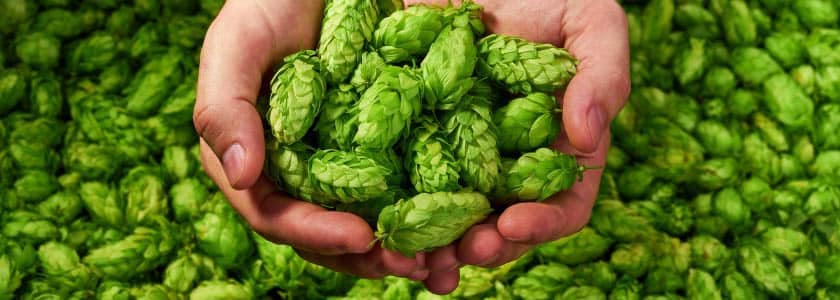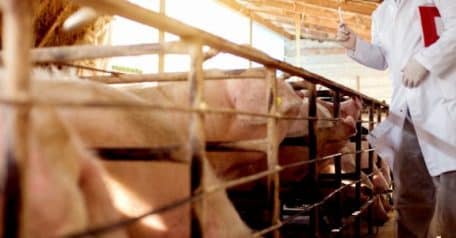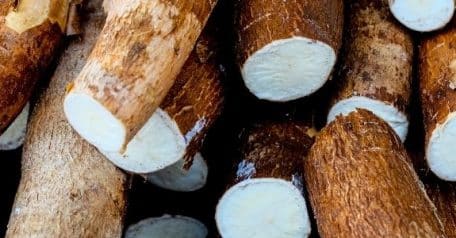When you’re talking about beer, what you’re really talking about is hops. Unfortunately for beer lovers, hops have problems—and CRISPR is helping to solve them.
What is Beer? Beer, at a minimum, is a combo of malt, water, yeast, and hops. What are Hops? Hops are the flowers of a plant called Humulus lupulus, and hops determine a beer’s aroma, flavor, and bitterness; hops also help keep beer fresher for longer and retain its foamy head.
Hops fall into two categories—those that provide aroma and those that provide bitterness, though some varieties cross the divide to include both. For many people, the more hops, the better the beer.
Hops are hardy plants that grow all over the world. In North America, most come from the Pacific Northwest, with Washington’s Yakima Valley being its main home—think of it as Napa for beer. The growth of craft beer means the global hops market is primed for expansion—analysts say the hops market globally could grow 4.5% annually between now and 2025, with that figure jumping to nearly 9% in the U.S.
Carbon Footprint of Beer and Hops
Unfortunately, hops have a significant environmental footprint. Take can require a lot of water to grow and most hops crops are sprayed with insecticides and pesticides several times each growing season. Most hops grown in the Northwest are irrigated from melted snow, and climate change in recent years has resulted in dwindling Cascade snowpacks. Decreased runoff, warmer temperatures, and prolonged heatwaves and droughts are forcing many growers to switch to groundwater irrigation, and mineral-heavy groundwater can negatively affect the taste of hops. Other environmental impacts include the consumption of fertilizer and the energy needed to transport the crops from field to brewer.
Brewing Beer Without Hops
CRISPR and beer production first collided several years ago. In 2018, a team of mostly California researchers described a way to create the flavor and aroma of beer without using hops. Instead, they produced strains of brewer’s yeast using CRISPR.
Mint and basil plants have enzymes that yield the flavors researchers were looking for. They put the genes for these enzymes into plasmid constructs, also including yeast promoters and the Cas9 gene. (Mint and basil? Yes. Genes from other plants reported to have linalool synthase activity, such as strawberry and olive, were not as easy to work with.)
The yeast cells were transformed with the Cas9 gene and sgRNA to target the DNA of a yeast enzyme. Plant metabolism genes from the linalool and geraniol biosynthesis pathways were then incorporated. A brewer at the University of California, Davis, later made beer from the most promising strains; in double-blind taste tests with employees from beer powerhouse Lagunitas, tasters said the CRISPR beer was hoppier than a comparable control beer, with one sampler tasting orange blossom and fruity children’s cereal without any off flavors.
“This was one of our very first sensory tests, so being rated as hoppier than the two beers that were actually dry-hopped at conventional hopping rates was very encouraging,” said Rachel Li, one of the authors of the paper.
Li and another paper lead author, Charles Denby, together started Berkeley Yeast, aiming to sell similar kinds of hoppy yeasts to brewers and could one day create other strains that incorporate new plant flavors. The company currently has four strains for sale.
There were several other hurdles that researchers had to overcome, reports Science Daily. The first was the need to learn how to genetically manipulate commercial brewer’s yeast, which has four sets of chromosomes.
“They found out that they needed to add the same four genes plus promoters to each set of chromosomes to obtain a stable strain of yeast; if not, as the yeast propagated they lost the added genes,” Science Daily wrote.
And they also had to find out which promoters would produce the amounts of linalool and geraniol (the other synthase used) at the right times to replicate the concentrations of hoppy beer, then scale it all up from test tubes to 40-liter kettles.
Beer Malting with CRISPR
Hops aren’t the only beer ingredient being modified by CRISPR. Another researcher at the University of California, Berkeley, has used genetic engineering to tackle malting.
For malting, Peggy Lemaux discovered that adding a gene for one starch debranching enzyme from wheat to barley could decrease the malting process from three to five days to as few as one to two days. Although completed in the early 2000s, that work was never used in commercial beers.
Can CRISPR Create a More Sustainable Beer?
Overall, CRISPR brewing may result in quaffable beer that has a lighter environmental impact.
“My hope,” said Denby, who was a normal homebrewer before he became a CRISPR beer marker, “is that if we can use the technology to make great beer that is produced with a more sustainable process, people will embrace that.”

























